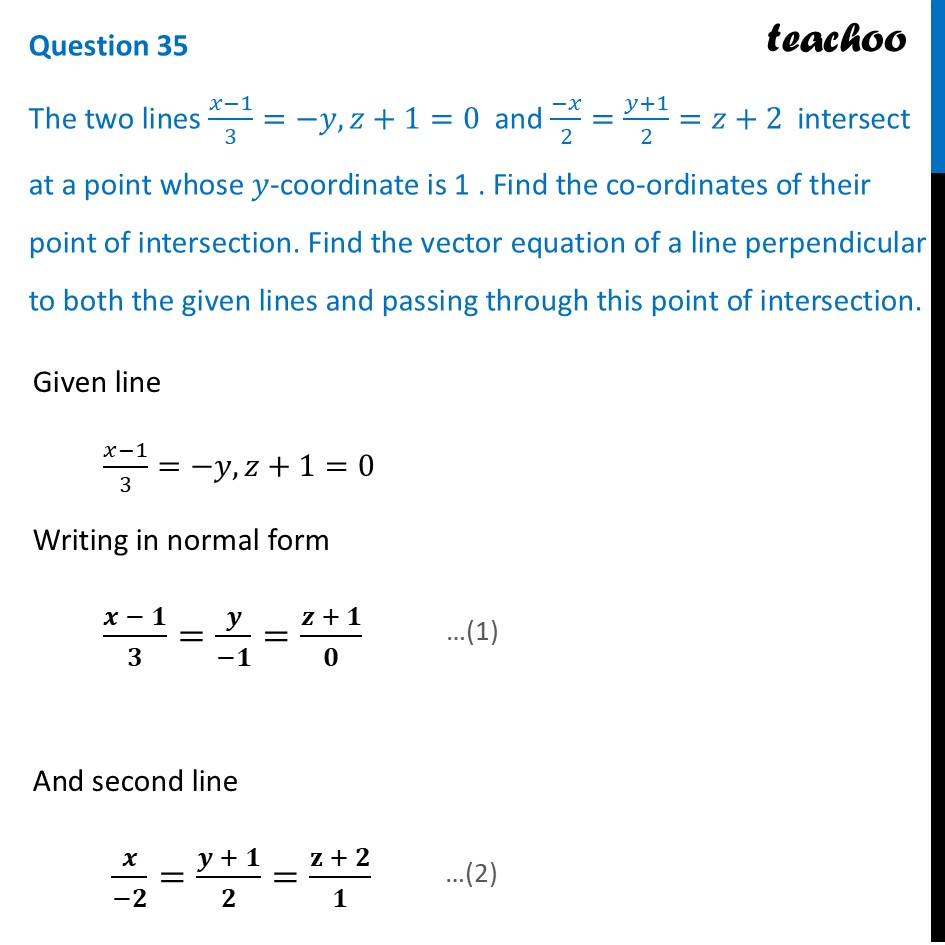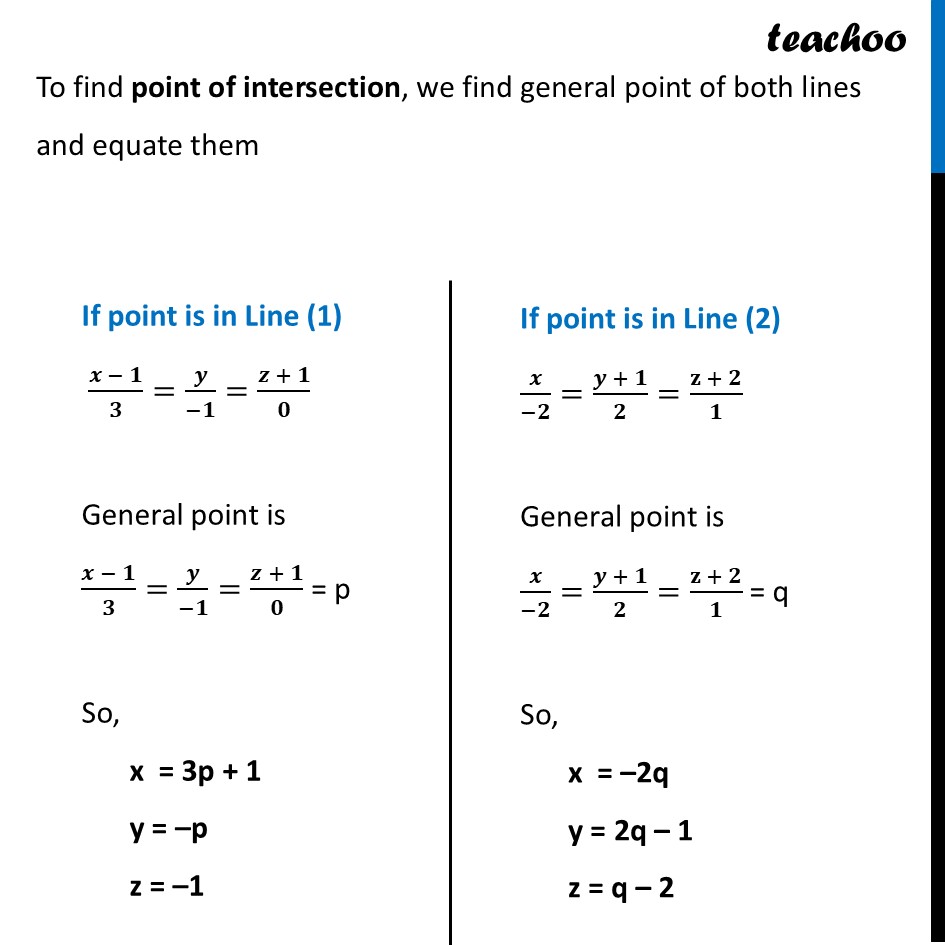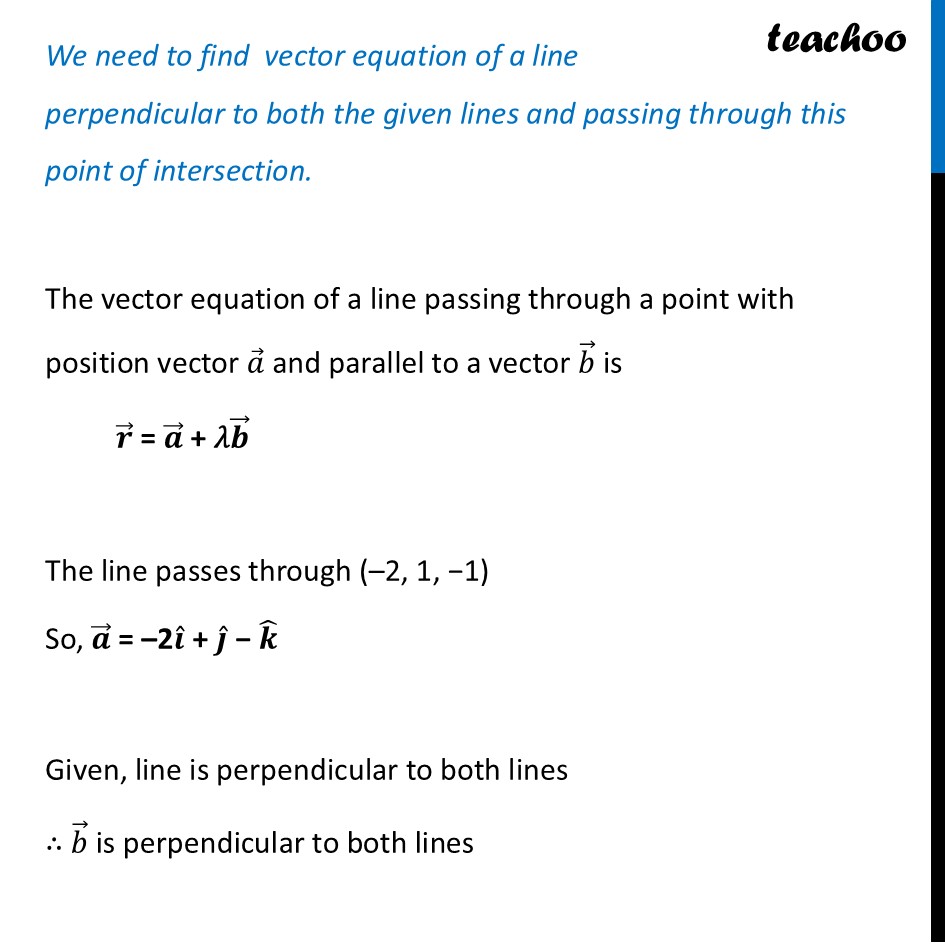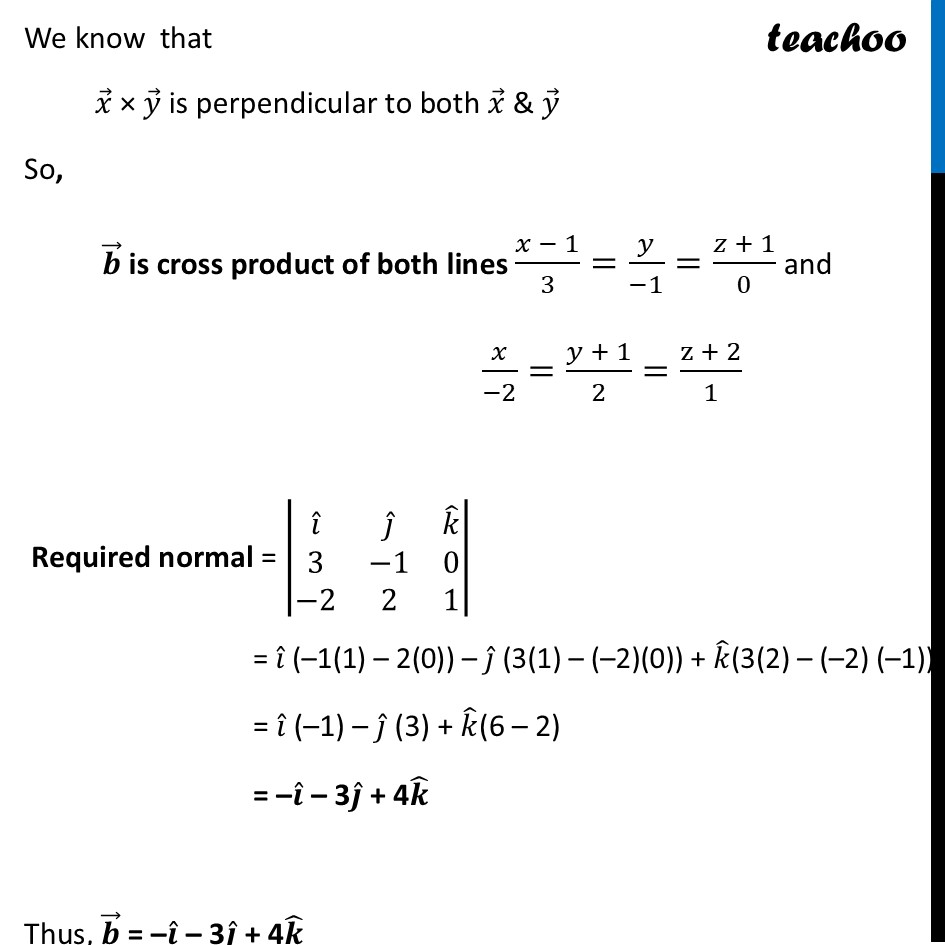This question is similar to Chapter 11 Class 12 Three Dimensional Geometry - Miscellaneous
Please check the question here






CBSE Class 12 Sample Paper for 2026 Boards
CBSE Class 12 Sample Paper for 2026 Boards
Last updated at September 2, 2025 by Teachoo
This question is similar to Chapter 11 Class 12 Three Dimensional Geometry - Miscellaneous
Please check the question here






Transcript
Question 35 The two lines (𝑥−1)/3=−𝑦,𝑧+1=0 and (−𝑥)/2=(𝑦+1)/2=𝑧+2 intersect at a point whose 𝑦-coordinate is 1 . Find the co-ordinates of their point of intersection. Find the vector equation of a line perpendicular to both the given lines and passing through this point of intersection.Given line (𝑥−1)/3=−𝑦,𝑧+1=0 Writing in normal form (𝒙 − 𝟏)/𝟑=𝒚/(−𝟏)=(𝒛 + 𝟏)/𝟎 And second line 𝒙/(−𝟐)=(𝒚 + 𝟏)/𝟐=(𝐳 + 𝟐)/𝟏 To find point of intersection, we find general point of both lines and equate them If point is in Line (1) (𝒙 − 𝟏)/𝟑=𝒚/(−𝟏)=(𝒛 + 𝟏)/𝟎 General point is (𝒙 − 𝟏)/𝟑=𝒚/(−𝟏)=(𝒛 + 𝟏)/𝟎 = p So, x = 3p + 1 y = –p z = –1 If point is in Line (2) 𝒙/(−𝟐)=(𝒚 + 𝟏)/𝟐=(𝐳 + 𝟐)/𝟏 General point is 𝒙/(−𝟐)=(𝒚 + 𝟏)/𝟐=(𝐳 + 𝟐)/𝟏 = q So, x = –2q y = 2q – 1 z = q – 2 Equating z-coordinates –1 = q – 2 –1 + 2 = q 1 = q q = 1 Putting q = 1, in x, y, z x = –2q = –2 × 1 = –2 y = 2q – 1 = 2 × 1 – 1 = 2 – 1 = 1 z = q – 2 = 1 – 2 = –1 Thus, point of intersection is (–2, 1, –1) We need to find vector equation of a line perpendicular to both the given lines and passing through this point of intersection. The vector equation of a line passing through a point with position vector 𝑎 ⃗ and parallel to a vector 𝑏 ⃗ is 𝒓 ⃗ = 𝒂 ⃗ + 𝜆𝒃 ⃗ The line passes through (–2, 1, −1) So, 𝒂 ⃗ = –2𝒊 ̂ + 𝒋 ̂ − 𝒌 ̂ Given, line is perpendicular to both lines ∴ 𝑏 ⃗ is perpendicular to both lines We know that 𝑥 ⃗ × 𝑦 ⃗ is perpendicular to both 𝑥 ⃗ & 𝑦 ⃗ So, 𝒃 ⃗ is cross product of both lines (𝑥 − 1)/3=𝑦/(−1)=(𝑧 + 1)/0 and 𝑥/(−2)=(𝑦 + 1)/2=(z + 2)/1 Required normal = |■8(𝑖 ̂&𝑗 ̂&𝑘 ̂@3&−1&0@−2&2&1)| = 𝑖 ̂ (–1(1) – 2(0)) – 𝑗 ̂ (3(1) – (–2)(0)) + 𝑘 ̂(3(2) – (–2) (–1)) = 𝑖 ̂ (–1) – 𝑗 ̂ (3) + 𝑘 ̂(6 – 2) = –𝒊 ̂ – 3𝒋 ̂ + 4𝒌 ̂ Thus, 𝒃 ⃗ = –𝒊 ̂ – 3𝒋 ̂ + 4𝒌 ̂ Now, Putting value of 𝑎 ⃗ & 𝑏 ⃗ in formula 𝑟 ⃗ = 𝑎 ⃗ + 𝜆𝑏 ⃗ ∴ 𝑟 ⃗ = (–2𝒊 ̂ + 𝒋 ̂ − 𝒌 ̂) + 𝜆 (–𝒊 ̂ – 3𝒋 ̂ + 4𝒌 ̂) Therefore, the equation of the line is (–2𝒊 ̂ + 𝒋 ̂ − 𝒌 ̂) + 𝜆 (–𝒊 ̂ – 3𝒋 ̂ + 4𝒌 ̂)